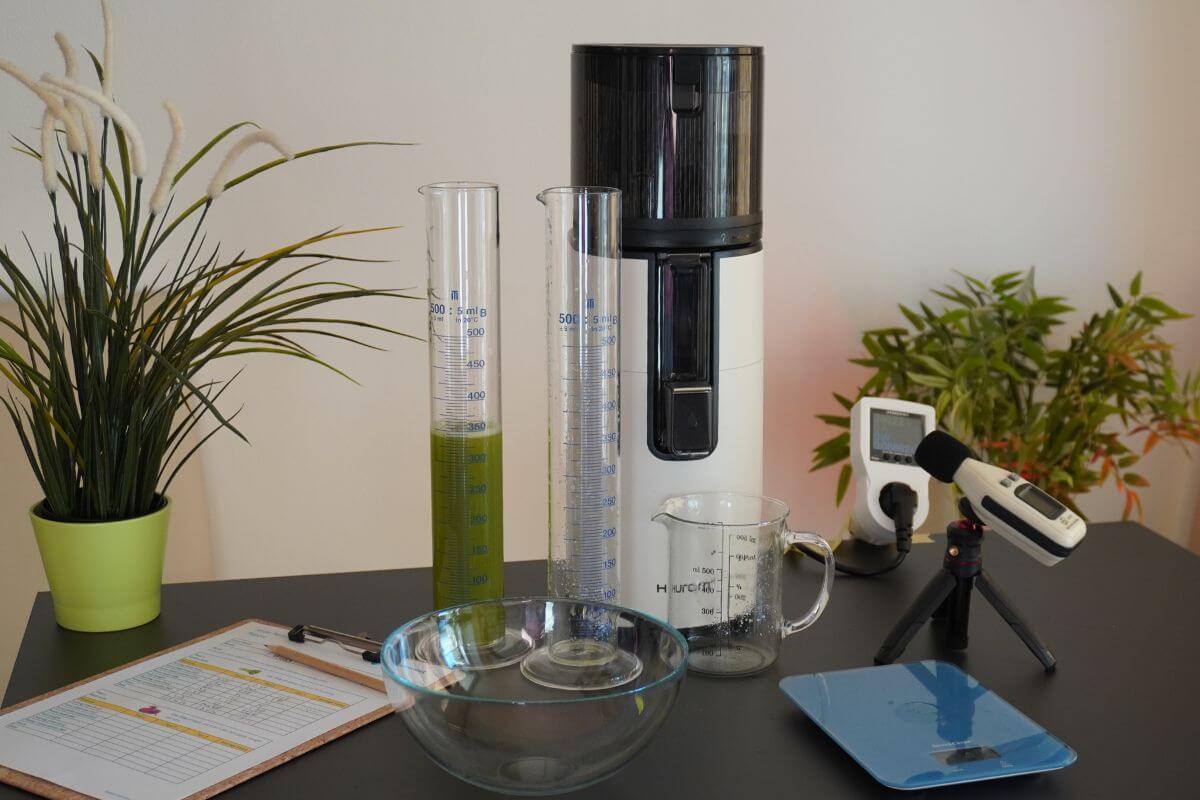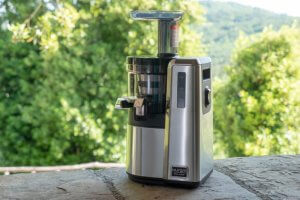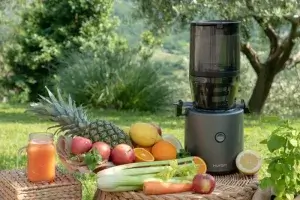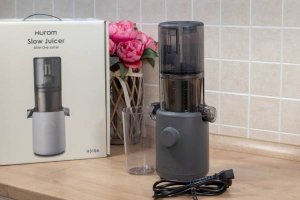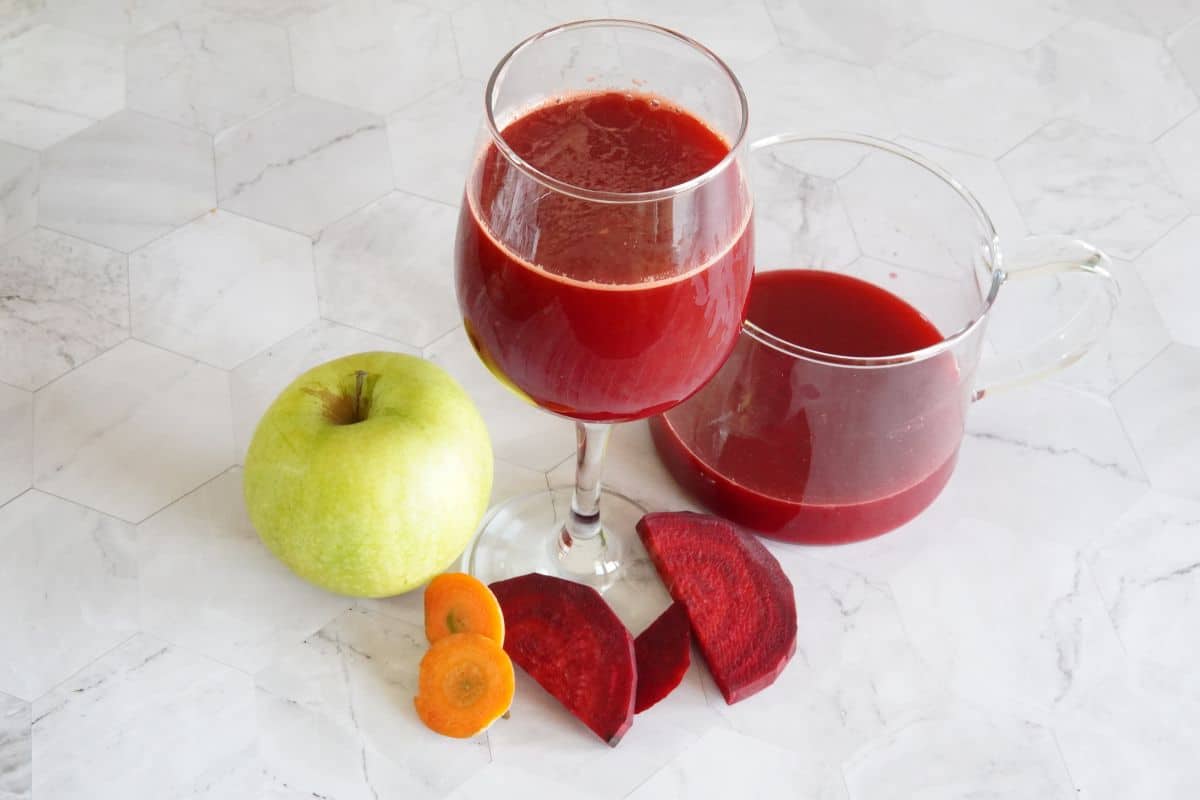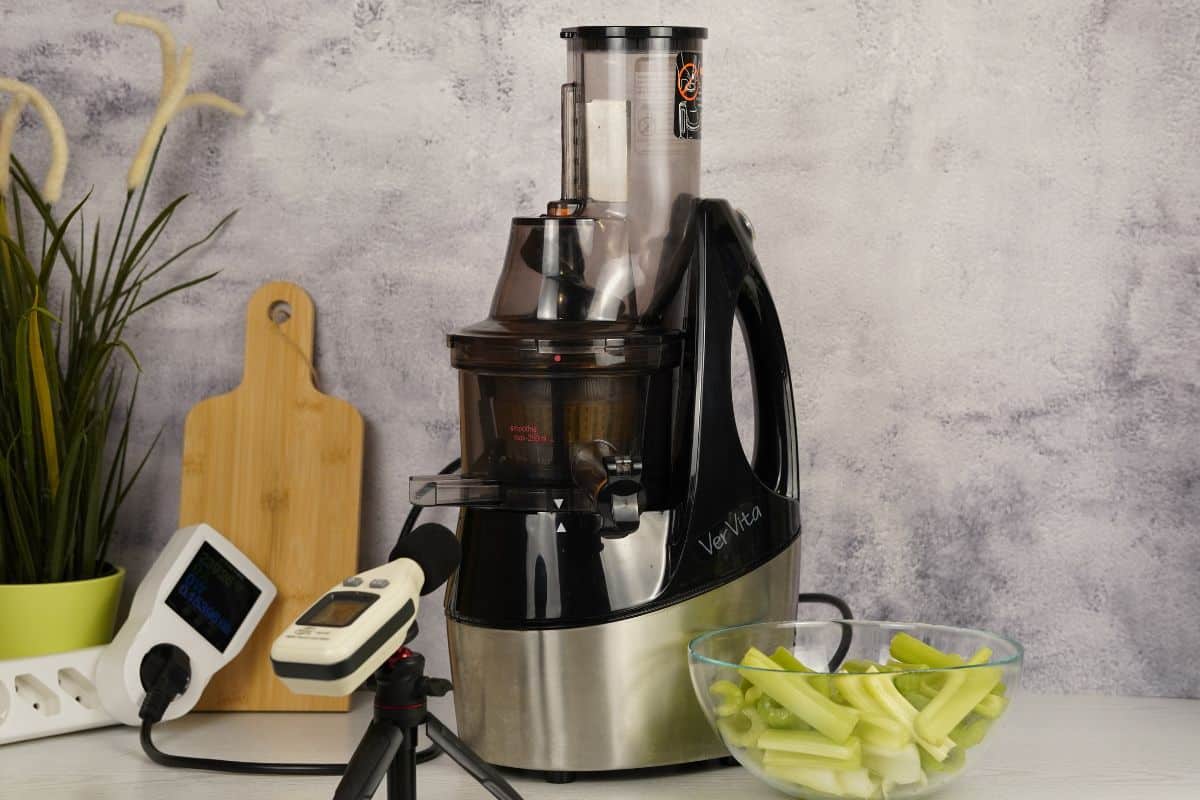What’s new:
• Updated celery juicing results
About Hurom H400 Review
After extensively testing the Hurom H400 alongside several other models including the H330P, H320N, H310A, and Hurom GI, I’m ready to share my detailed findings to help you decide if this juicer is right for your needs. While each model has its strengths, the H400 brings some interesting innovations to the table – though with some surprising trade-offs that I’ll discuss in this review.
– Alen
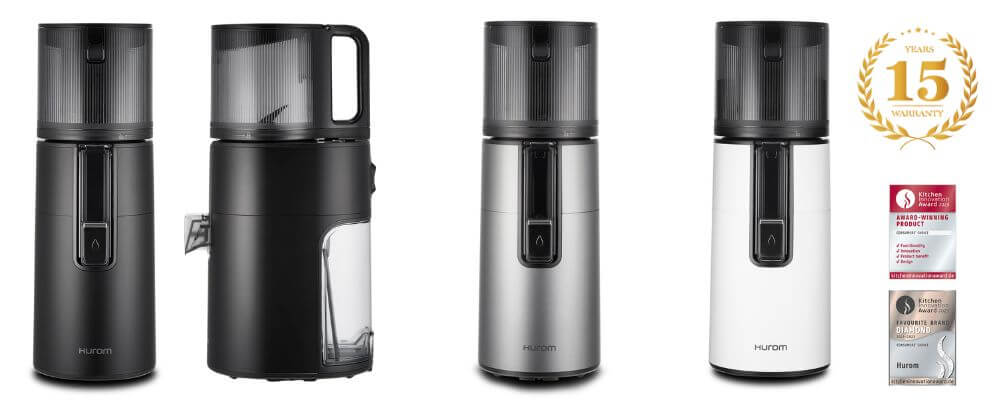
Short Summary
Design and Aesthetics: Premium build quality with a sleek, modern design. The hidden pulp container is a clever innovation, and the juicer is available in three attractive colors (Matt Black, Titanium Gray, and Warm White). Very stable during operation with excellent finish.
Ease of Use: The self-feeding system works impressively well – you rarely need the pusher except for leafy greens. Just add your ingredients and let the H400 do its work. While the hopper attachment has a slight learning curve, it becomes natural after a few uses.
Cleaning and Maintenance: Exceptionally quick and easy to clean – among the fastest I’ve tested. No mesh strainer to scrub is a huge plus. Just be mindful of the pulp exit area which might need extra attention, and the large hopper might be challenging in smaller sinks.
Juicing Performance: Excellent juice extraction with good yields across most ingredients. Although it runs at 90 RPM compared to H330P’s 50 RPM, the higher speed causes ingredients to bounce around more, which can actually slow down the juicing process. The juice quality is impressive – noticeably clearer than the H310A and almost matching the H330P’s excellent filtration.
Value for Money: A premium investment at €699, justified by its excellent build quality, 15-year warranty, and exceptional cleaning convenience. If you prioritize ease of cleaning and modern design over absolute juice quality, it’s worth the price. Consider the H330P if you prefer slower juicing for less oxidation.
- About Hurom H400 Review
- Technical Specifications
- Design and Build Quality
- Assembly and Components
- Performance Testing Results
- Key Features and Real-World Performance
- Alternative Options: How Does It Compare?
- Pros and Cons
- Who Should Buy the H400?
- Photo Gallery
- Final Thoughts
- How would you rate this juicer?
- Check my other reviews:
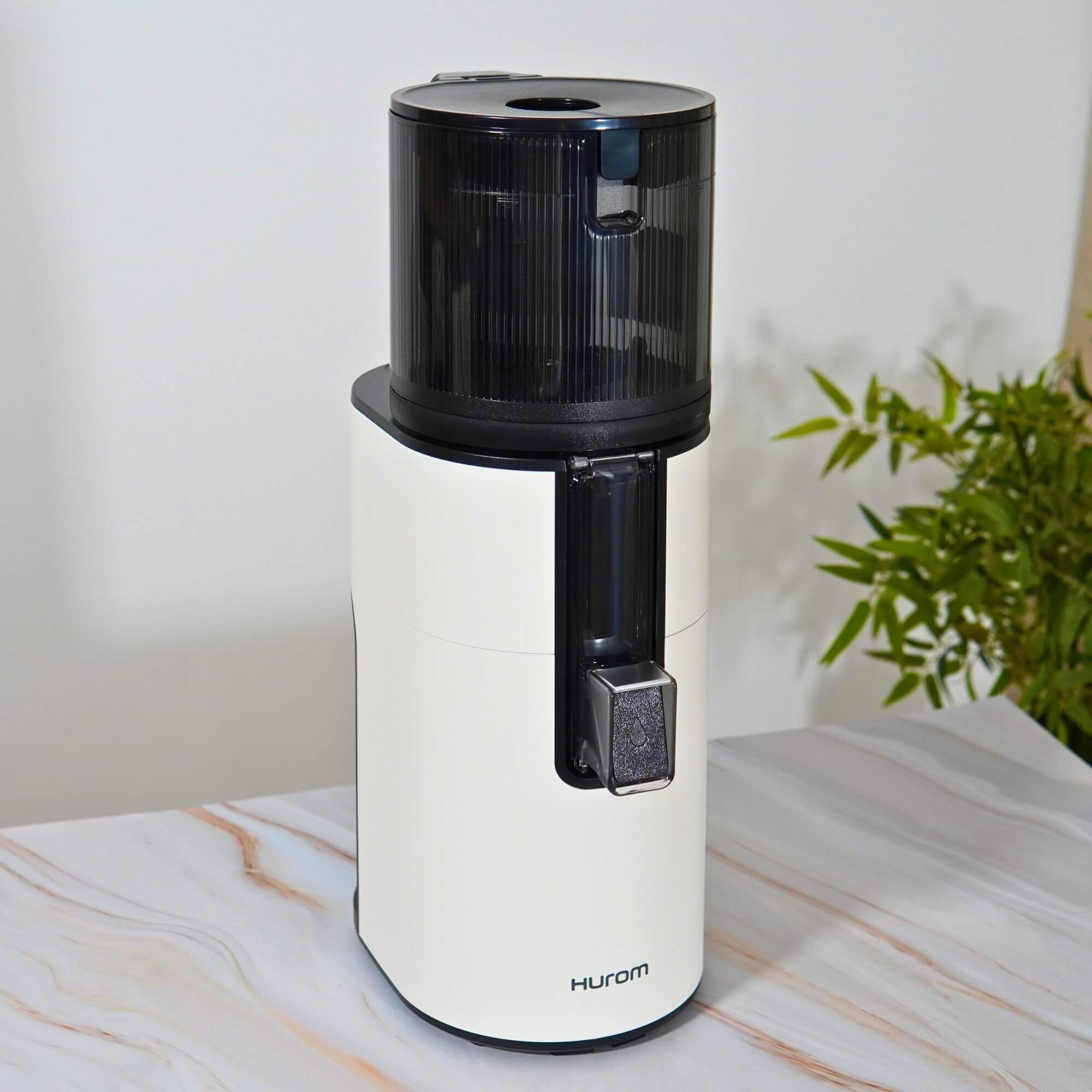
Partnership discount:
Use code ASV10 for 10% off at Hurom Europe
Technical Specifications
- Weight: 6.7 kg
- Dimensions: 16.9 × 26.1 × 47.1 cm
- RPM: 90
- Power Consumption: 150W
- Available Colors:
- Matt Black
- Titanium Gray
- Warm White
Design and Build Quality
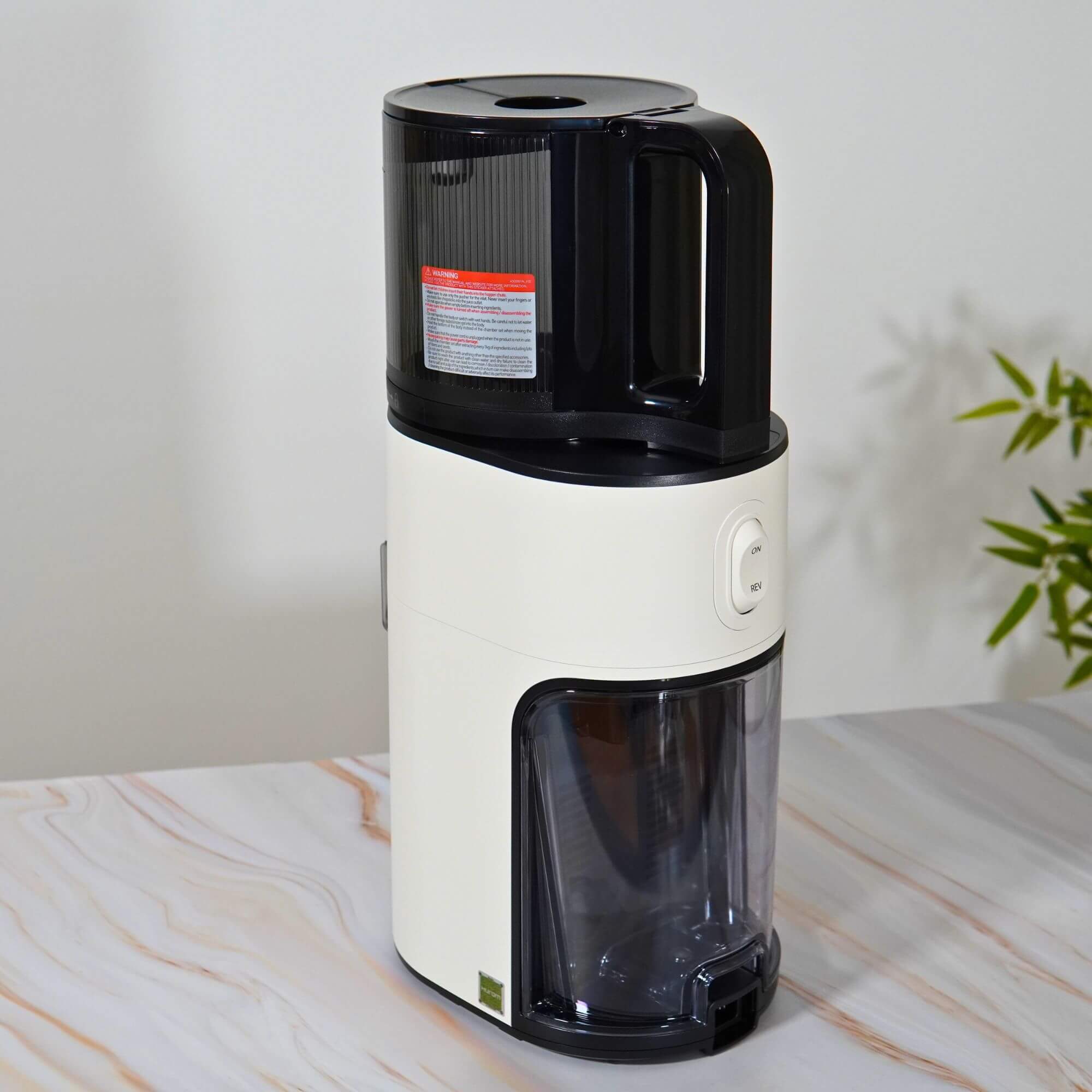

I chose the white version for testing, and the H400’s sleek design immediately stands out. The build quality is excellent, with a particularly clever design choice of hiding the pulp container at the back. During my testing, I found the unit maintains rock-solid stability while operating.
Assembly and Components

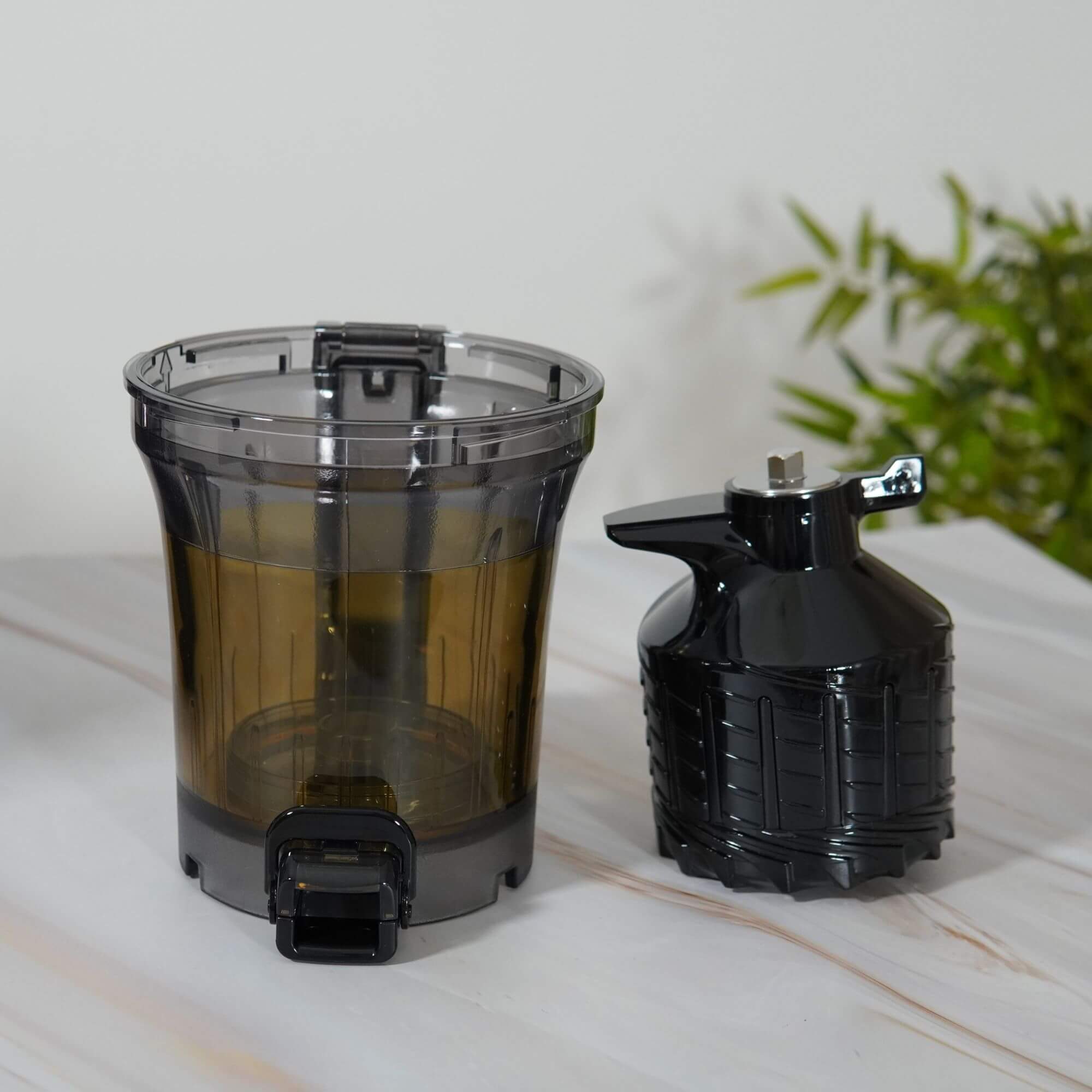
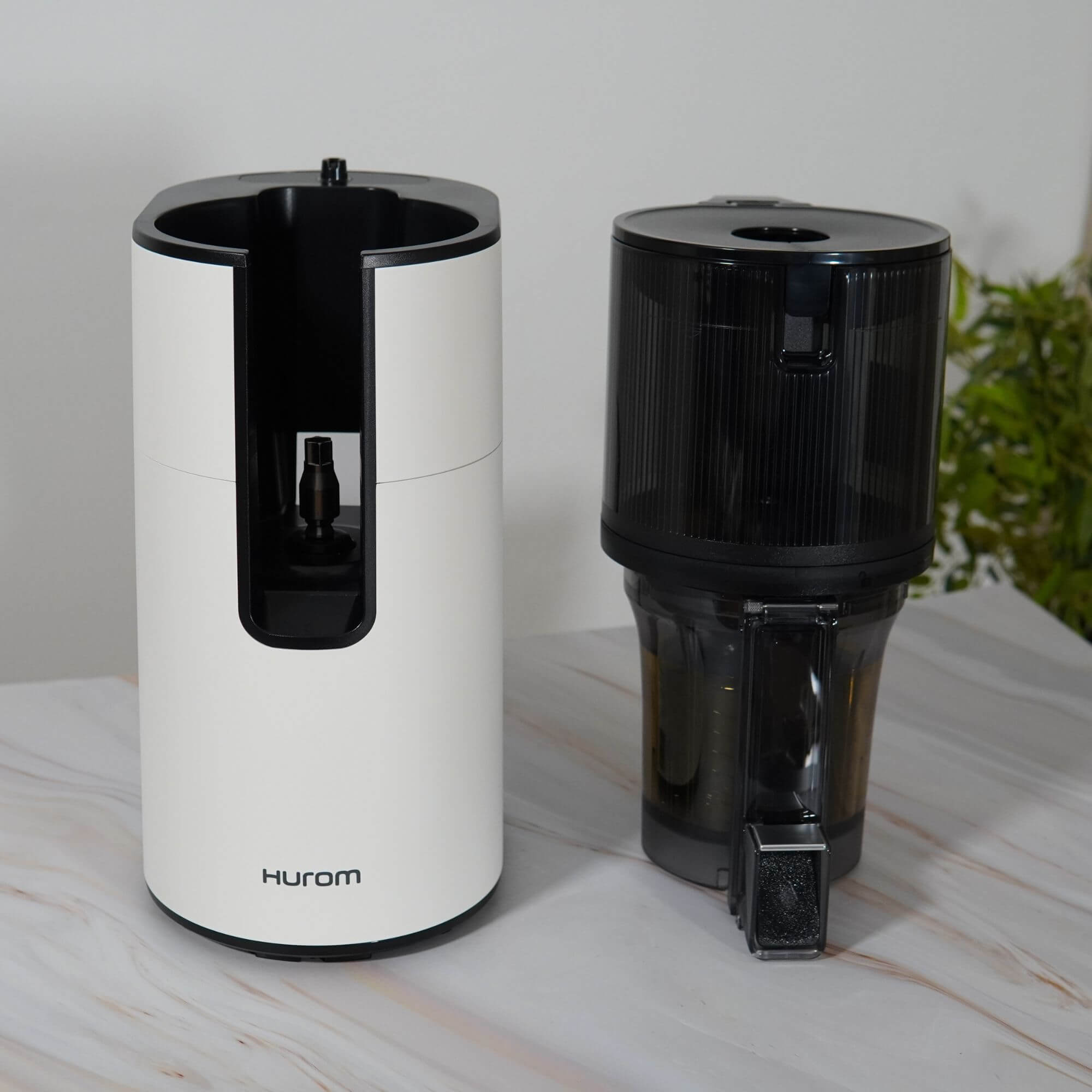
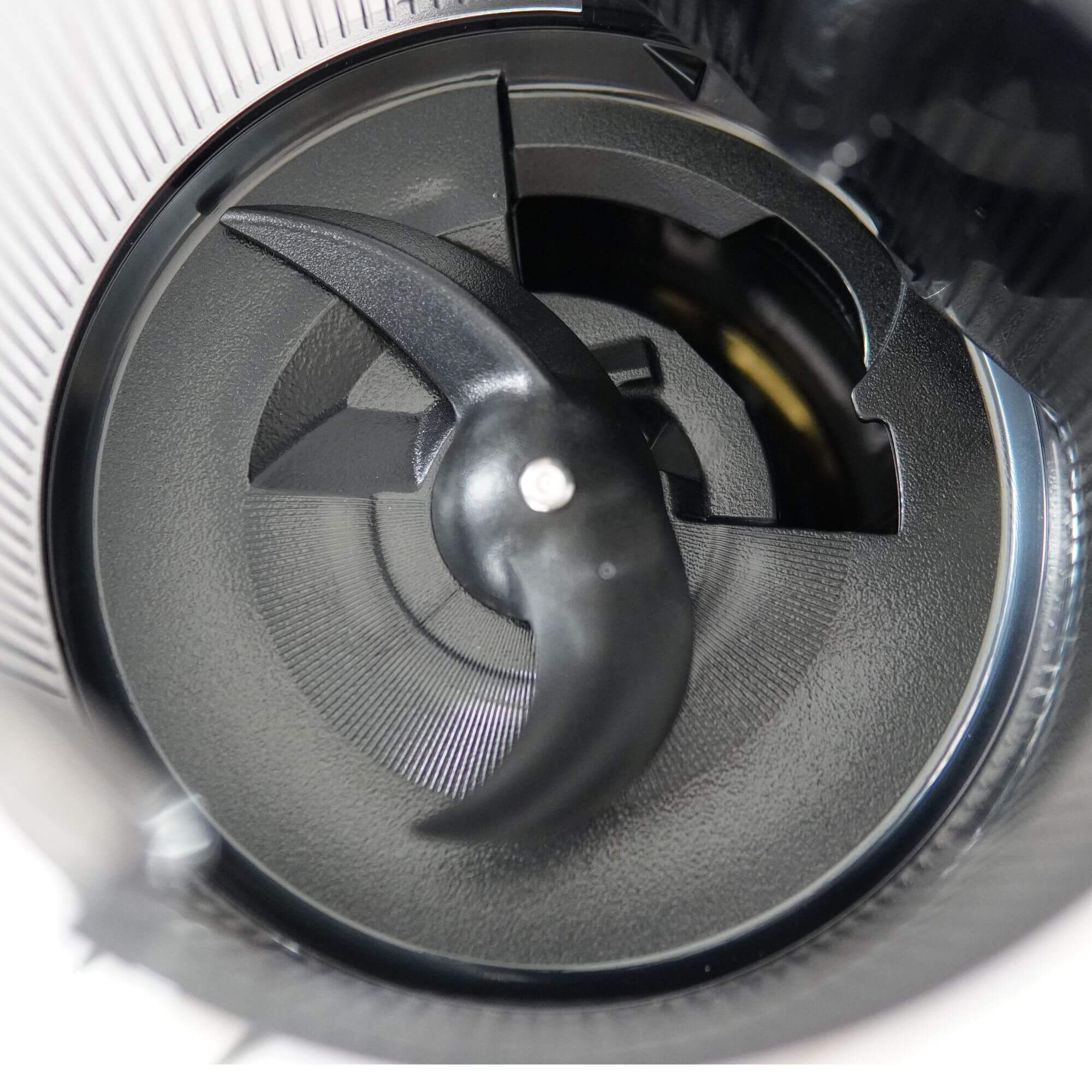
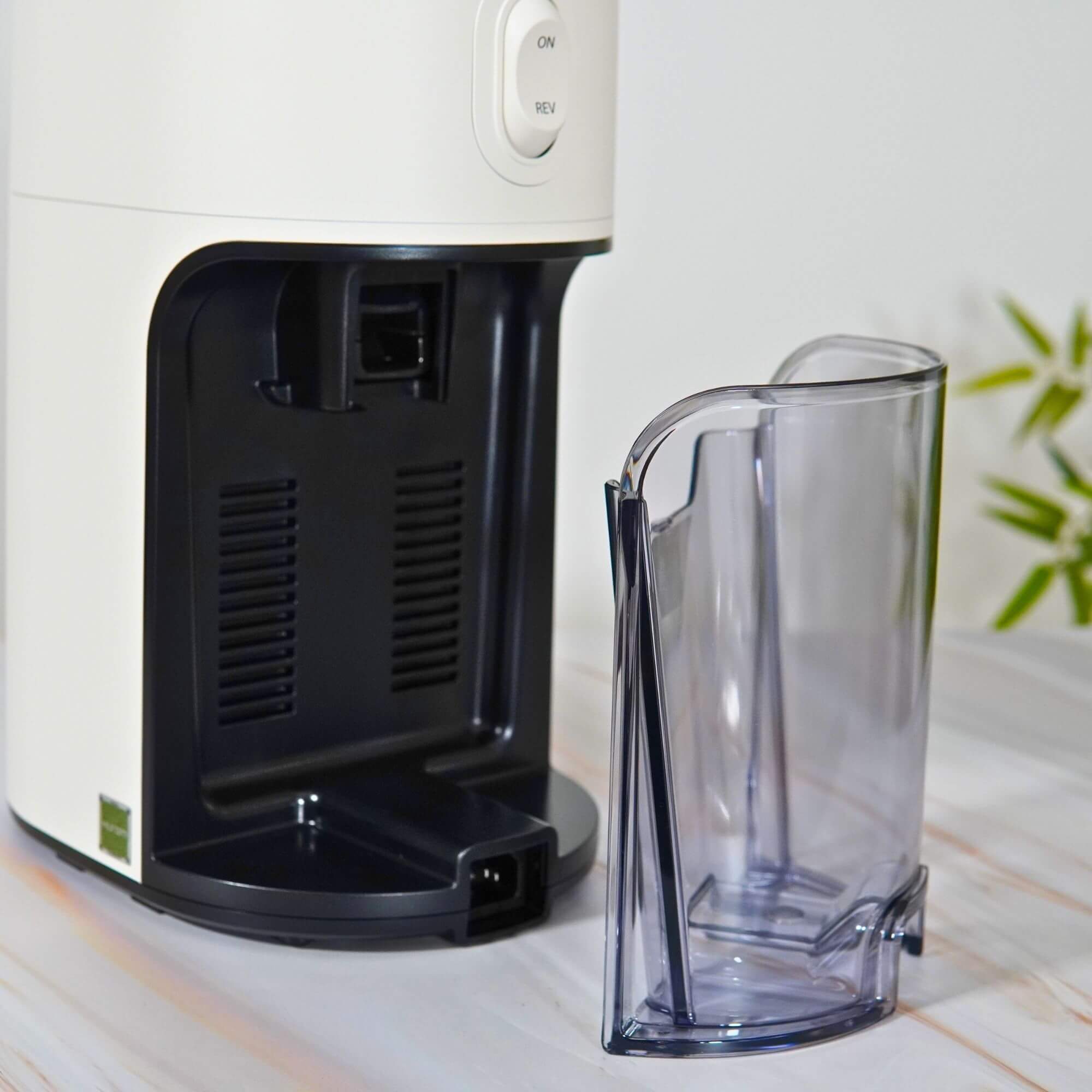
The assembly consists of four main parts:
- Two-piece multiscrew (Hurom’s version of an auger)
- Juicing chamber
- 2L hopper
- Main body with integrated pulp container
I should mention that while Hurom markets this as having “3 pieces to wash,” you’re actually dealing with 4 pieces when properly disassembling for cleaning.
Performance Testing Results
To ensure consistent and reliable results, all tests follow my standardized Juicer Testing Methodology. Each ingredient undergoes triple testing with standardized equipment and precise measurements to provide accurate, real-world performance data. All measurements are taken using calibrated equipment:
- Decibel meter (positioned 15cm from juicer)
- Watt meter for power monitoring
- 500ml measuring cups
- Cylindric measure tubes
- Ikea Riklig teapot strainer (for standardized straining)
Celery
For celery testing, I always use 500g of celery cut into smaller pieces – somewhere between 4 and 6cm. Since I regularly juice celery, I performed several tests, which are presented in the table below. This should show you how good the H400 is at celery juicing.
Also, check out some of my YouTube videos to see it in action:
Carrots
I’m using 500g of carrots cut into approximately 4cm pieces for this test. For thicker carrots, I cut them in half or quarters lengthwise before cutting to length.
For this initial test, I’ve completed one round of measurements. I will update the results once I complete the additional tests required by our standard triple-testing protocol.
Apples (500g, Granny Smith, cored and split)
- Juicing time: 2:46
- Initial juice yield: 365ml
- Strained juice yield: 352ml
- Noise level: 68dB
- Pulp weight: 12g
- Cleaning time: 1:28
- Power consumption: 97W
Note: Additional testing for beetroot (500g, cut into 1.5×1.5cm pieces) and spinach (200g) is ongoing. Results will be added upon completion of the standard triple-testing protocol.
Key Features and Real-World Performance
Speed and Juice Quality
Running at 90 RPM (compared to H330P’s 50RPM), I’ve noticed some interesting differences. While the higher RPM might suggest faster juicing, the reality is more complex. The increased speed causes ingredients like carrots to bounce around in the feeding chamber rather than falling smoothly into the auger, which can actually make the juicing process take longer than with the H330P.
When it comes to juice quality, the results surprised me – the overall juice clarity is better than I expected, producing clear juice that’s almost on par with the H330P and noticeably less pulpy than the H310A.
However, there’s one significant consideration: the faster speed does lead to more oxidation in celery juice, resulting in a brownish color. If you’re primarily planning to juice celery, this could be a deal-breaker – I’d recommend the H330P instead. For other ingredients, though, the juice quality is excellent.
Self-Feeding System
The self-feeding mechanism works impressively well with most ingredients. I rarely needed the included pusher – in fact, like with my experience with the H320N and H330P, I only reached for it when juicing leafy greens. However, I noticed that carrots tend to bounce around a bit more than in the slower H330P, likely due to the higher RPM.
Noise Levels
While slightly louder than the H330P and H320N, and producing some squeaking noise (particularly when juicing beetroot and cabbage), it’s still significantly quieter than a typical blender. Even for early morning juicing, I wouldn’t consider the noise level problematic.
Cleaning Experience
This is where the H400 really shines. Compared to other models I’ve tested, especially the H330P, cleaning is remarkably quick. The absence of a mesh strainer (replaced by the multiscrew design) makes a huge difference. Just be aware that if you have a small sink, the large hopper might be a bit unwieldy during cleaning.
One design aspect worth noting is the pulp exit area where the juicing chamber connects to the main body. I’ve found that pulp can sometimes remain stuck in this area when removing the juicing assembly. This requires extra attention during cleaning and can be a bit frustrating, especially if you’re trying to keep your cleaning time minimal.
Alternative Options: How Does It Compare?
H400 vs H330P
If you’re deciding between these two models, here’s what you should consider:
- H330P runs slower (50 RPM vs 90 RPM), but can actually juice more efficiently due to better ingredient feeding
- H330P produces less oxidation in juices
- H330P costs less (€629 vs €699)
- Both have 15-year warranties
- H400 is significantly easier to clean
- H400 has a more modern design with hidden pulp container
- Both have similar juice yields
For celery juice enthusiasts, the H330P might be the better choice. However, if cleaning convenience is your priority, the H400’s advantages might justify its higher price.
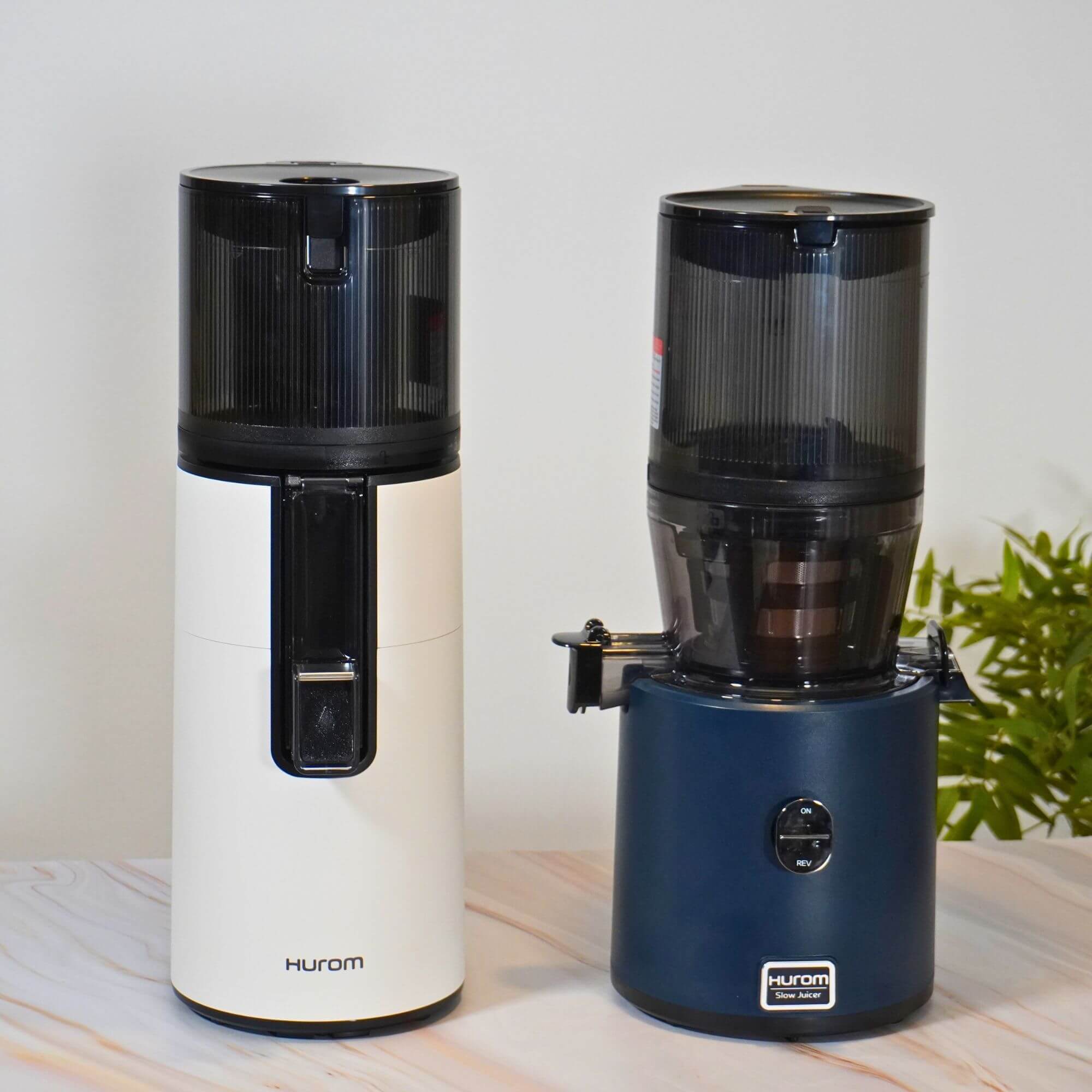
H400 vs H310A
These models share similar technology (multiscrew design), but have some key differences:
- H310A is more compact and smaller overall
- H310A runs quieter during operation
- H310A is easier to store
- H310A has a shorter warranty (10 years vs H400’s 15 years)
- H400 has larger capacity
- H400 juices faster
- H310A might be better for smaller households or limited counter space

[Coming Soon: Check back for detailed comparison videos showing these juicers in action with various ingredients including celery, carrots, and more. These side-by-side demonstrations will help you see the real-world differences in operation, noise levels, and juice quality.]
Pros and Cons
Pros
- Exceptionally quick and easy cleaning
- Excellent build quality and sleek design
- Effective self-feeding system
- Hidden pulp container keeps countertop looking clean
- Very stable during operation
- Rarely needs pusher for most ingredients
- Modern, premium aesthetics
- 15-year warranty
Cons
- Higher price than H330P (€699 vs €629)
- Higher RPM can cause ingredients to bounce, potentially slowing down juicing
- Slightly more oxidation in juice due to higher RPM
- Squeaking noise specifically when juicing beetroot and cabbage
- Occasional pulp buildup in exit area
Who Should Buy the H400?
Based on my extensive testing, I’d recommend the H400 for:
- Busy families who might juice more often with an easier-to-clean machine
- Those who value modern design and convenience over absolute juice quality
- Users who want a versatile daily juicer that’s not a hassle to maintain
Consider other models (like the H330P or Hurom GI for leafy greens) if juice quality is your absolute top priority.
Photo Gallery
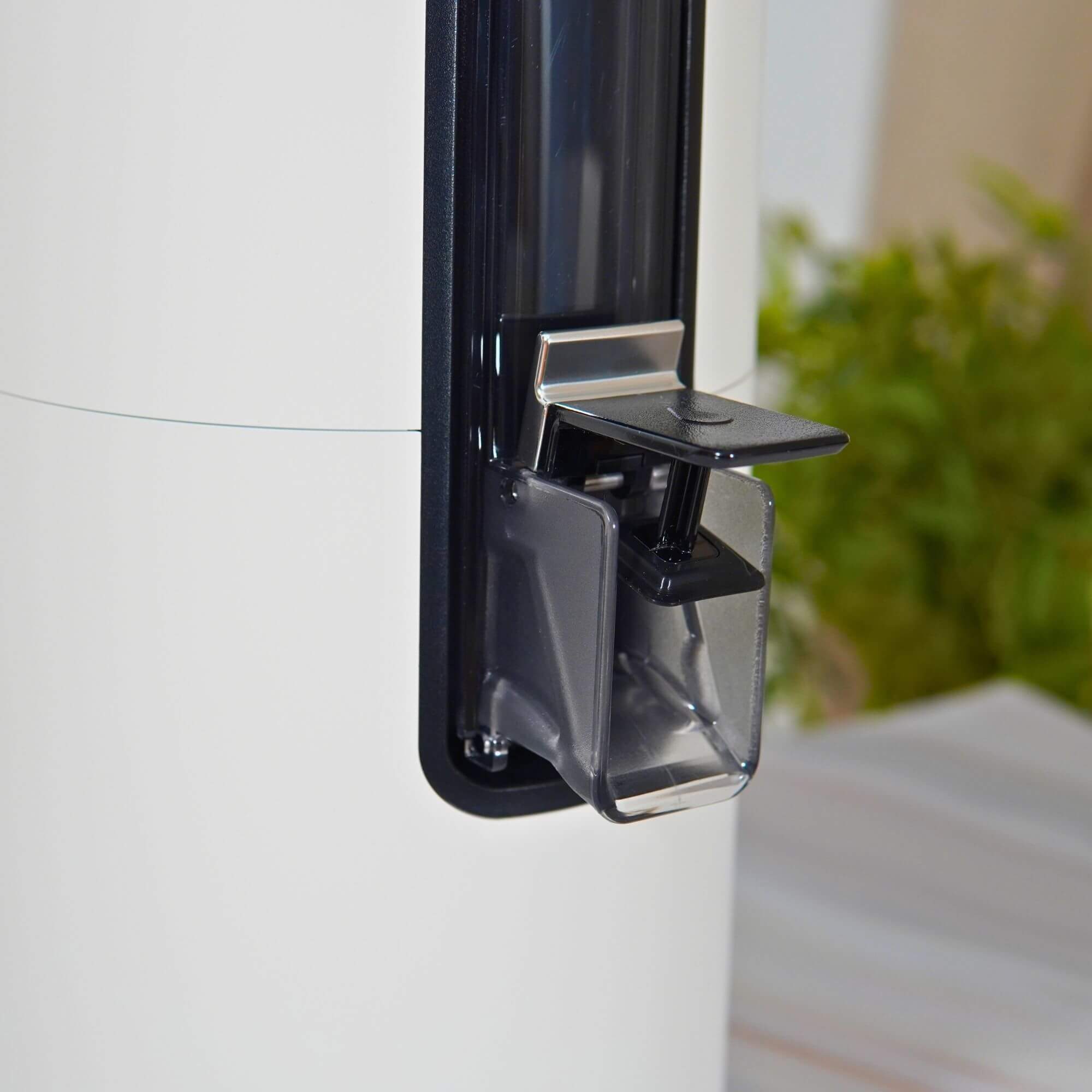
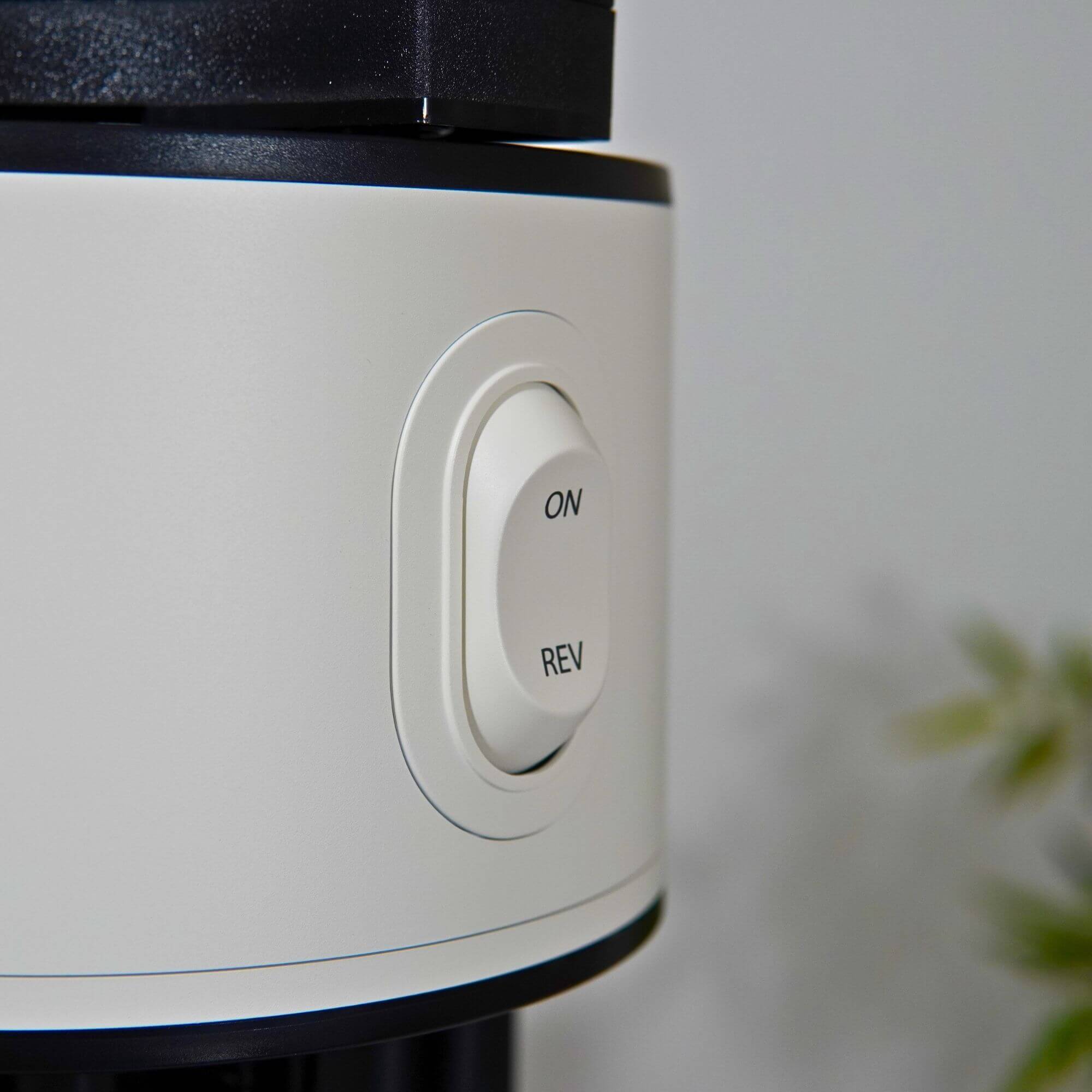
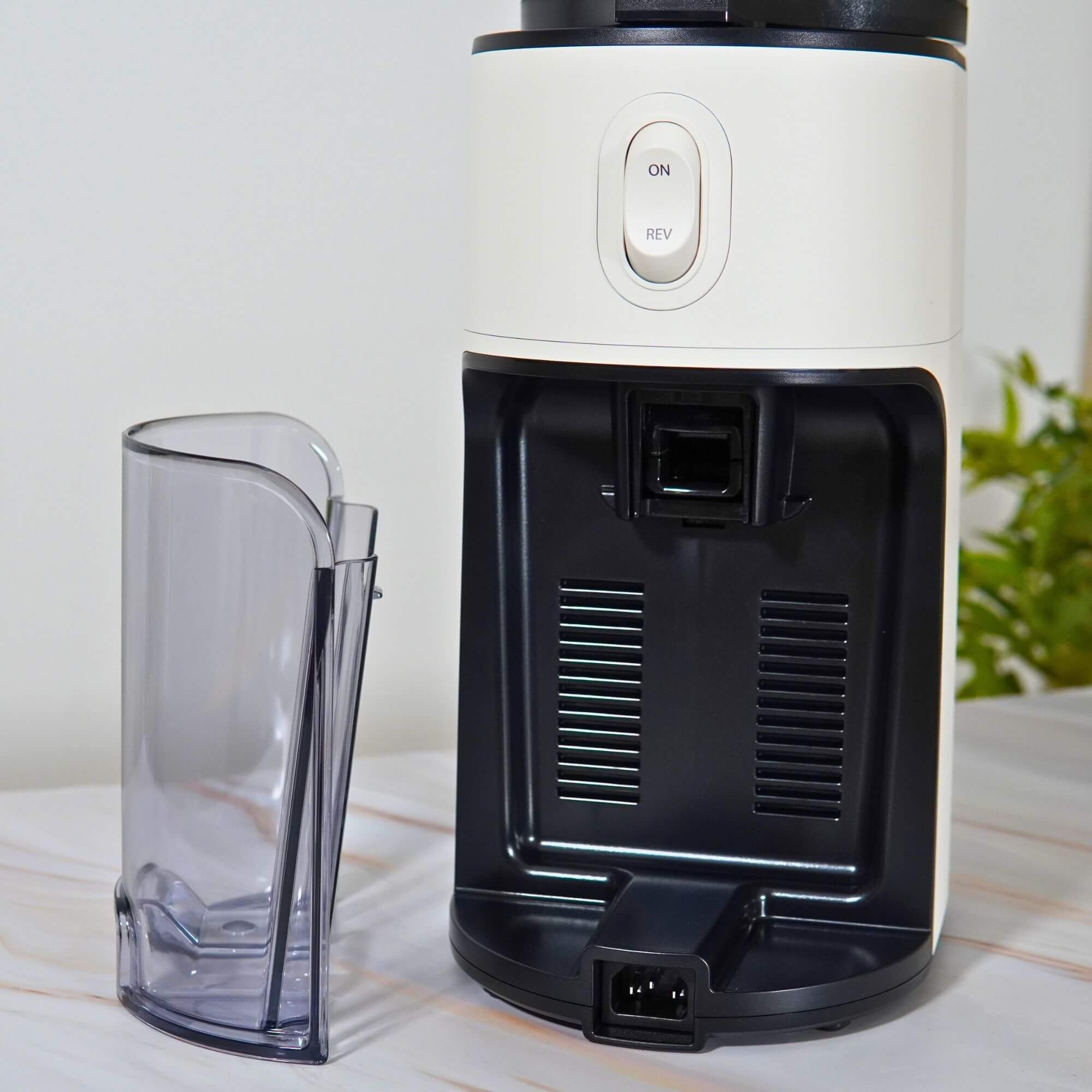
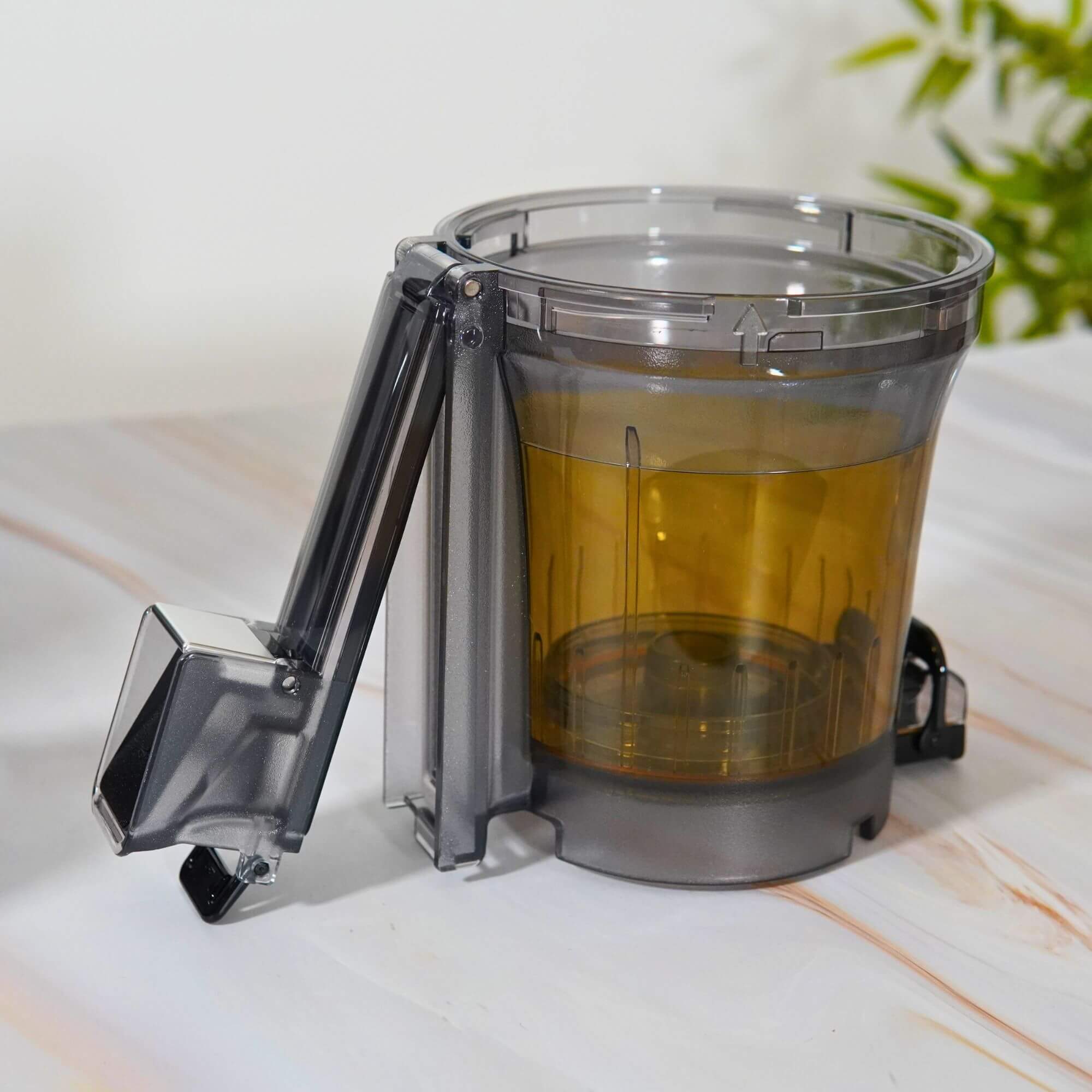
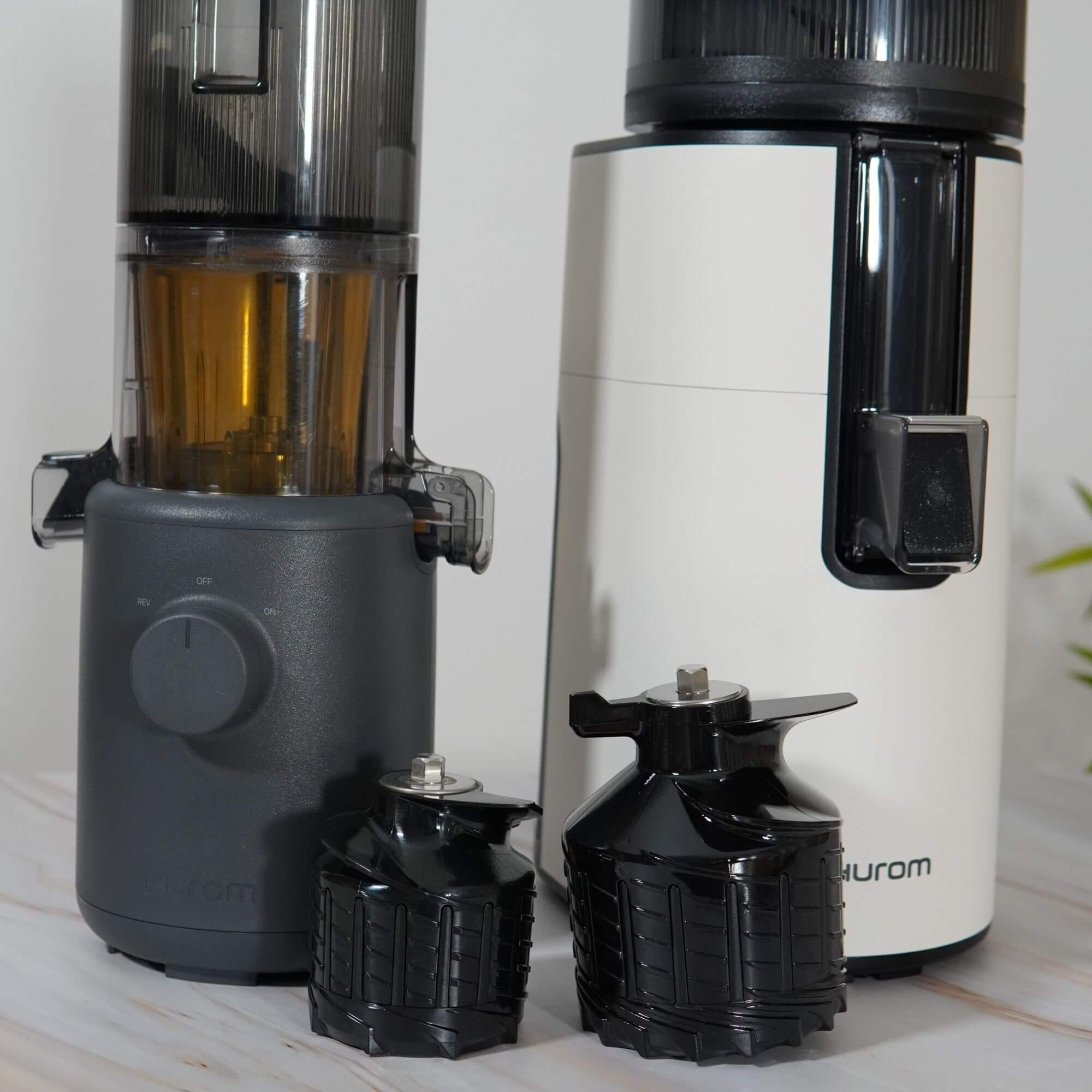
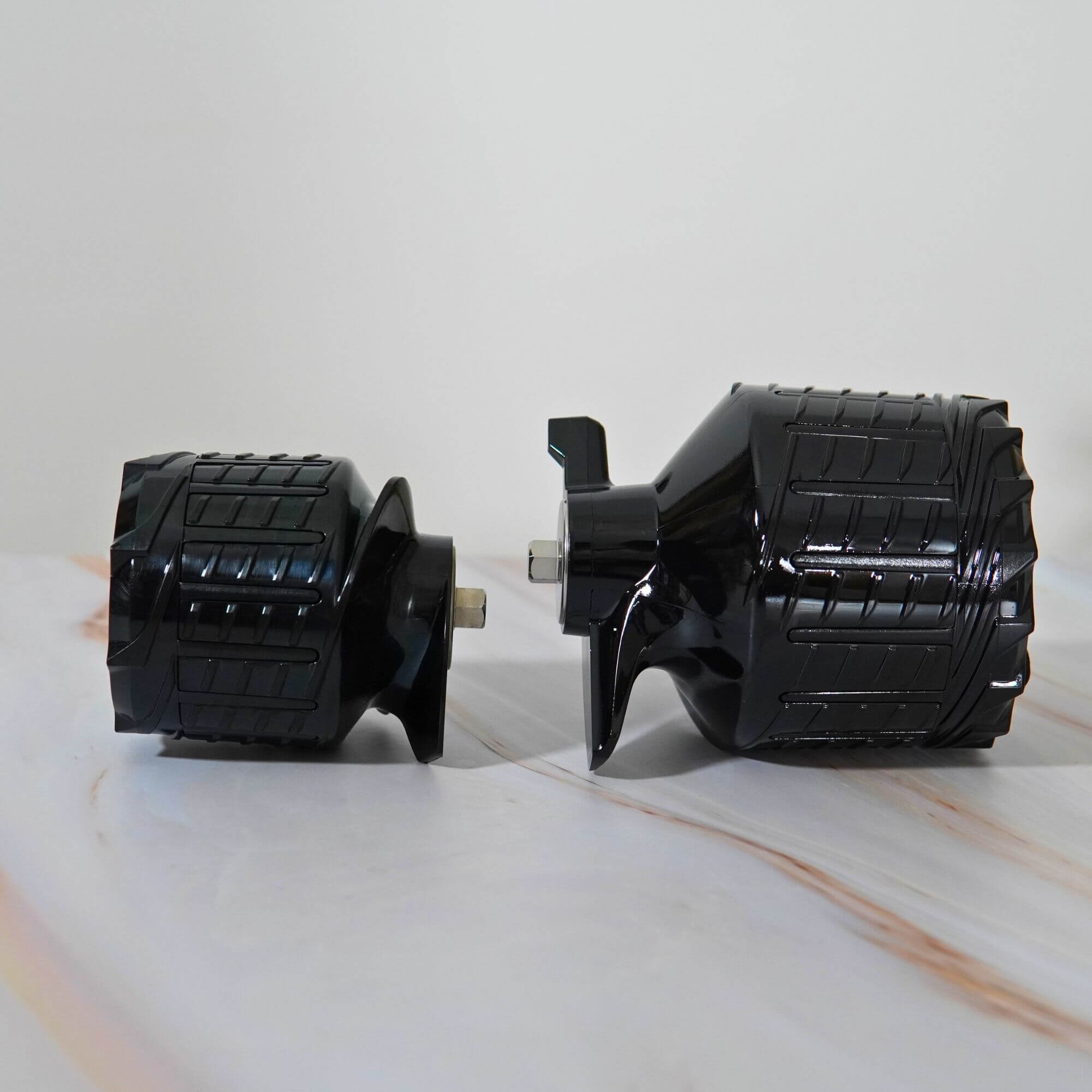
Final Thoughts
The H400 represents an interesting evolution in Hurom’s lineup. While it makes some compromises in juice quality due to higher speed, it compensates with exceptional convenience and cleaning ease. During my testing, I found myself reaching for it more often than other models simply because it’s so easy to clean – and in my experience, the easier a juicer is to clean, the more likely you are to use it regularly.
Disclosure: This juicer was provided by Hurom Europe for testing, but all opinions and test results are my own unbiased findings.
Check my other reviews:
Hurom HZ Review – Is it still worth it in 2024?
Hurom H320N Review
Hurom H310A Review – Quiet & Compact Slow Juicer
How would you rate this juicer?
I’m Alen, the founder of JuiceNext.com, and I’ve been immersed in the world of juicing for over 4 years now.
As an electrical engineer, I bring a unique, analytical perspective to my juicer reviews. I personally test each juicer, focusing on their efficiency and performance.
My commitment is to provide unbiased, detailed reviews and original recipes to help you make informed decisions. When I’m not in the kitchen experimenting with new juice combinations, you’ll find me hiking or bike riding – activities that perfectly complement my passion for healthy living and juicing.
Given my background in electrical engineering, you might notice that I tend to include a lot of technical information in my juicer reviews. My ultimate goal is threefold: offer my honest thoughts on currently available juicers, and keep you informed about juicer promotions and discounts.





